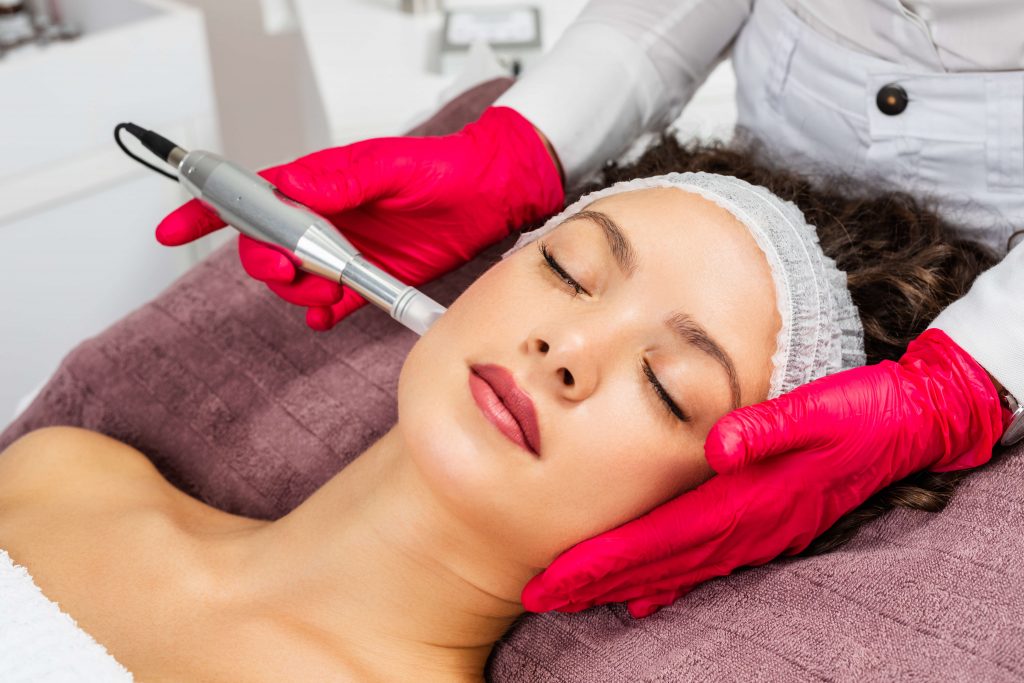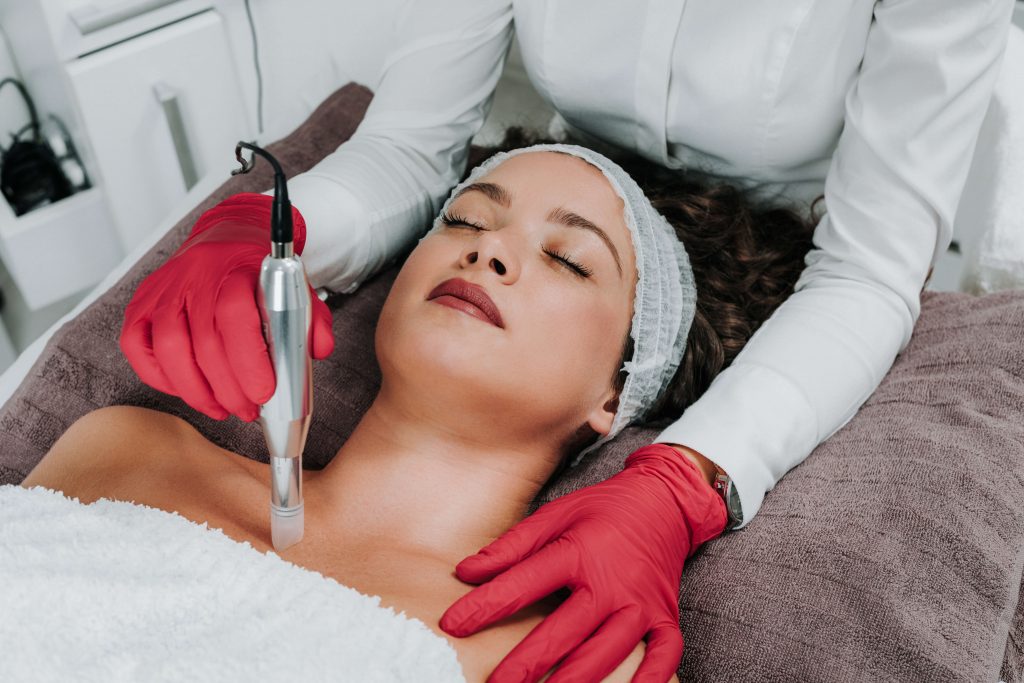Microneedle mesotherapy
is a method of mechanical skin puncturing with the use of very thin needles. It uses various tools equipped with needles such as: roller or dermapen.
Micro-punctures cause controlled skin damage.
The needles used in this technique are not used for applying preparations, but for very dense “punching” of the skin of the face or other parts of the body. During the procedure, numerous punctures of the skin cause microtrauma, and often also micro-bleeding. A small amount of blood then flows out of the damaged blood vessels and the thrombocyte activation process begins. Small amounts of blood components getting into the extravascular space secrete a number of cytokines that influence the skin regeneration processes. As a result of these processes, the so-called growth factors.
The length of the needles should be adapted to the expected effect (lifting, regeneration, scar reduction, etc.) and to the treatment area, due to the different structure of the skin in different parts of the body.
INDICATIONS FOR A MICRO-NEEDLE THERAPY TREATMENT
Microneedle mesotherapy has a wide spectrum of action.
The indications for the procedure include:
- anti-aging prophylaxis – moisturizing, the formation of new collagen and elastin,
- lifting – tension of sagging skin, improvement of the face oval
- rejuvenation – recovery of a healthy skin tone, improvement of microcirculation, thickening of the living
part of the epidermis, the formation of new collagen, elastin and capillaries, - wrinkles – smoothing out fine lines on the face, neck and décolleté,
- acne scars, postoperative scars, burn scars, keloids – shallow, soften and even out the color,
- stretch marks – smoothing and reducing the size,
- common acne – the treatment helps to reduce the production of sebum,
- discoloration – the proper production of melanocytes is stimulated in discolored areas, the skin regains
its natural color, - erythema – reduction of damaged superficial blood vessels, which improve significantly after healing,
- hair loss – regular treatments can also improve the condition of the scalp and stimulate the renewal of
weakened hair.
CONTRAINDICATIONS
Contraindications for the procedure are:
- skin break, open wounds,
- blood infection with HIV, HSV, hepatitis,
- pregnancy,
- breast-feeding,
- neoplastic conditions and tumors of unknown origin,
- tendency to form keloids,
- moles (at the site of surgery)
- blood clotting disorders, taking anticoagulants,
- infections in treated areas (herpes, wart, active acne eruptions),
- inflammation on the skin,
- sensory disturbances,
- bacterial, viral and fungal infections,
- burns,
- allergies to metals and active ingredients contained in cocktails,
- impaired skin regeneration ability,
- autoimmune diseases,
- metabolic diseases,
- use of drugs (antibiotic therapy 2 weeks back, steroid therapy 8 weeks back, retinoid therapy 6-12 months back),
- taking certain medications.
SIDE EFFECTS AFTER THE TREATMENT
Common, normal skin reactions are: erythema and irritation (usually disappear within a few hours) and swelling. Less common: allergic contact dermatitis (to the materials used, including needles), discoloration (if post-treatment photoprotection is not used), local infections ( after using a non-sterile tool), systemic hypersensitivity, reactivation of herpes, aggravation of acne, granulomas
POST-TREATMENT
The person undergoing the treatment should be informed about the appropriate skin care after mesotherapy. After the treatment in the office, the cleansed and disinfected skin should be protected with a soothing and regenerating protective cream with an SPF filter, min. 20, preferably 50. On the day after the treatment, you should not touch the skin, and do not put on makeup. In the evening and in the
morning of the following day, the skin should be gently cleansed with a mild alcohol-free cleansing gel or foam and toned, in the event of discomfort in the form of burning, pulsating, itchy skin, you can use a thin layer of soothing cream from the pharmacy containing allantoin, panthenol.
The recommended number of treatments is a series of 4-6 treatments repeated at intervals of 2-4 weeks

